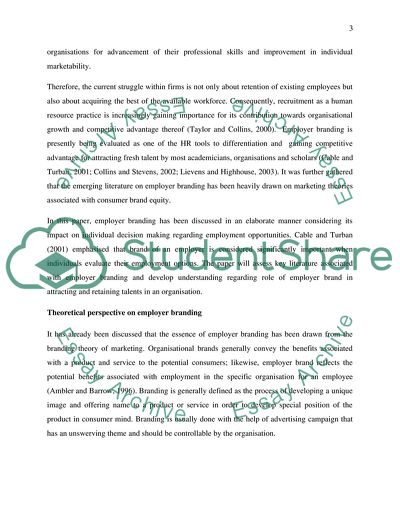Cite this document
(One presenter discussed the impact of effective employer branding on Essay - 1, n.d.)
One presenter discussed the impact of effective employer branding on Essay - 1. https://studentshare.org/human-resources/1846384-one-presenter-discussed-the-impact-of-effective-employer-branding-on-recruitment-and-selection-processes-your-hr-director-would-like-you-to-critically-evaluate-the-implications-of-investing-in-hr-branding-for-the-purpose-of-improving-the-outcomes-of-rec
One presenter discussed the impact of effective employer branding on Essay - 1. https://studentshare.org/human-resources/1846384-one-presenter-discussed-the-impact-of-effective-employer-branding-on-recruitment-and-selection-processes-your-hr-director-would-like-you-to-critically-evaluate-the-implications-of-investing-in-hr-branding-for-the-purpose-of-improving-the-outcomes-of-rec
(One Presenter Discussed the Impact of Effective Employer Branding on Essay - 1)
One Presenter Discussed the Impact of Effective Employer Branding on Essay - 1. https://studentshare.org/human-resources/1846384-one-presenter-discussed-the-impact-of-effective-employer-branding-on-recruitment-and-selection-processes-your-hr-director-would-like-you-to-critically-evaluate-the-implications-of-investing-in-hr-branding-for-the-purpose-of-improving-the-outcomes-of-rec.
One Presenter Discussed the Impact of Effective Employer Branding on Essay - 1. https://studentshare.org/human-resources/1846384-one-presenter-discussed-the-impact-of-effective-employer-branding-on-recruitment-and-selection-processes-your-hr-director-would-like-you-to-critically-evaluate-the-implications-of-investing-in-hr-branding-for-the-purpose-of-improving-the-outcomes-of-rec.
“One Presenter Discussed the Impact of Effective Employer Branding on Essay - 1”. https://studentshare.org/human-resources/1846384-one-presenter-discussed-the-impact-of-effective-employer-branding-on-recruitment-and-selection-processes-your-hr-director-would-like-you-to-critically-evaluate-the-implications-of-investing-in-hr-branding-for-the-purpose-of-improving-the-outcomes-of-rec.


